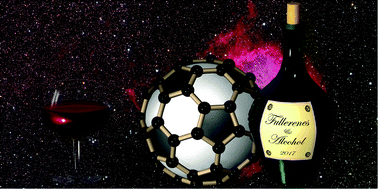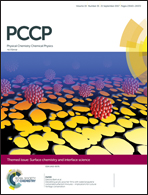Electron ionization of helium droplets containing C60 and alcohol clusters
Abstract
We report a mass spectrometric investigation of (C60)n clusters mixed with either methanol or ethanol clusters inside helium nanodroplets. The abundance of ion products produced by electron ionization shows marked differences compared with pure methanol/ethanol clusters without C60 [M. Goulart, P. Bartl, A. Mauracher, F. Zappa, A. M. Ellis and P. Scheier, Phys. Chem. Chem. Phys., 2013, 15, 3577], where clusters containing in excess of a hundred alcohol monomers were observed. In contrast, under identical conditions concerning He droplet size and alcohol pickup pressure, only a small number of alcohol molecules become attached to the fullerene ions. Our results suggest that each fullerene cluster acts as a charge sink, which hampers alcohol cluster formation, as well as intra-cluster ion-molecule reactions. The appearance of specific ‘magic number’ peaks suggests an enhanced probability for the attachment of small alcohol rings to (C60)n+ clusters.

- This article is part of the themed collection: SBQ-RSC: Celebrating UK-Brazil collaborations


 Please wait while we load your content...
Please wait while we load your content...